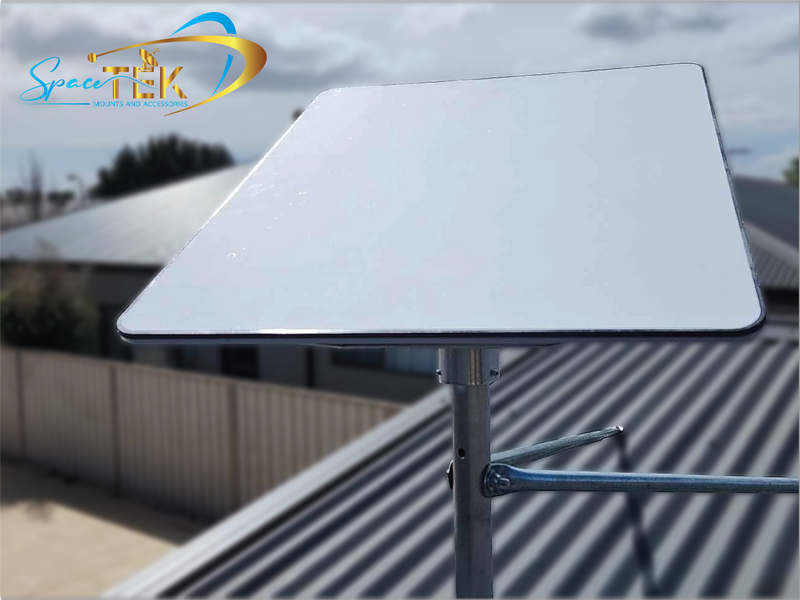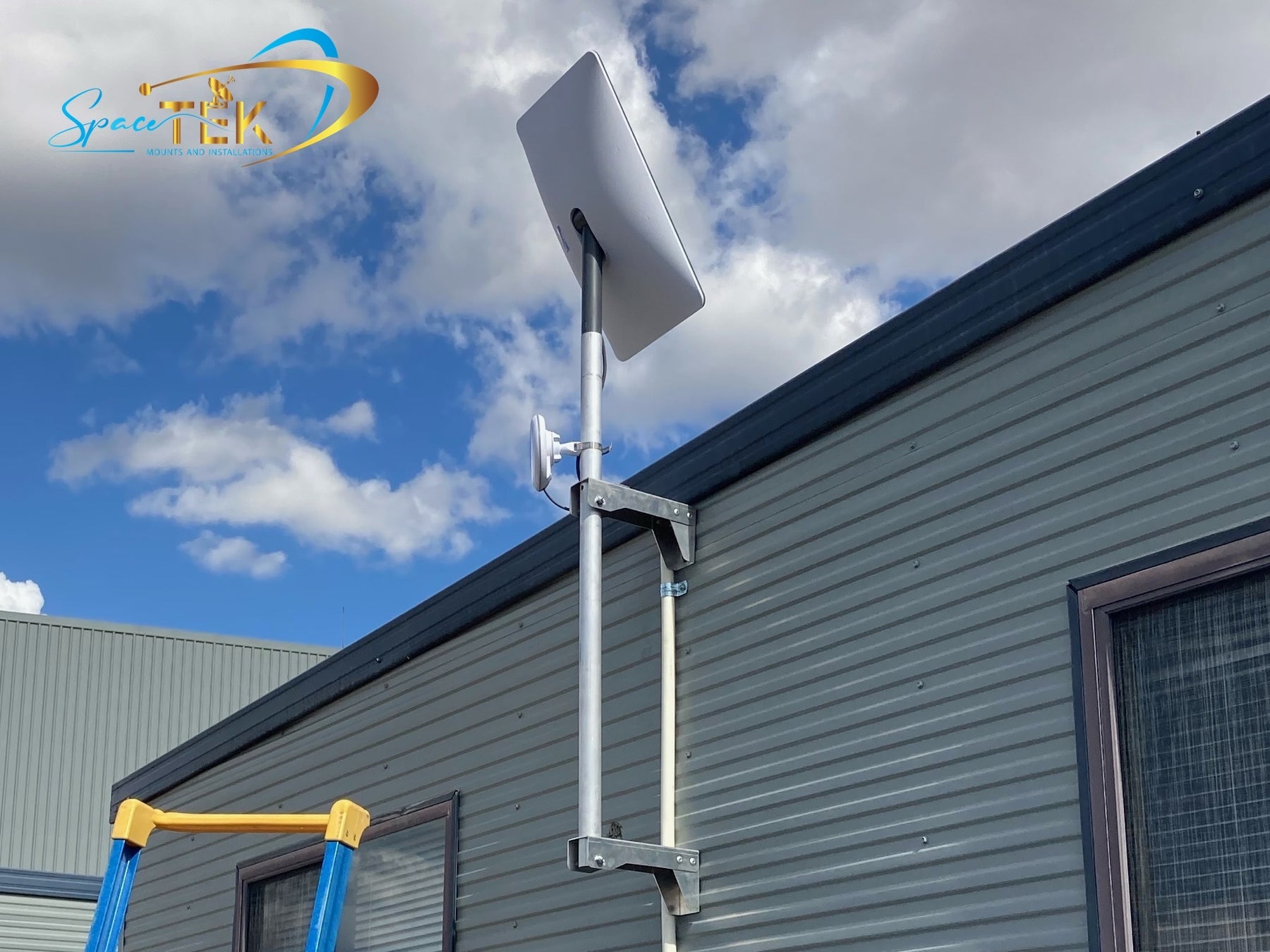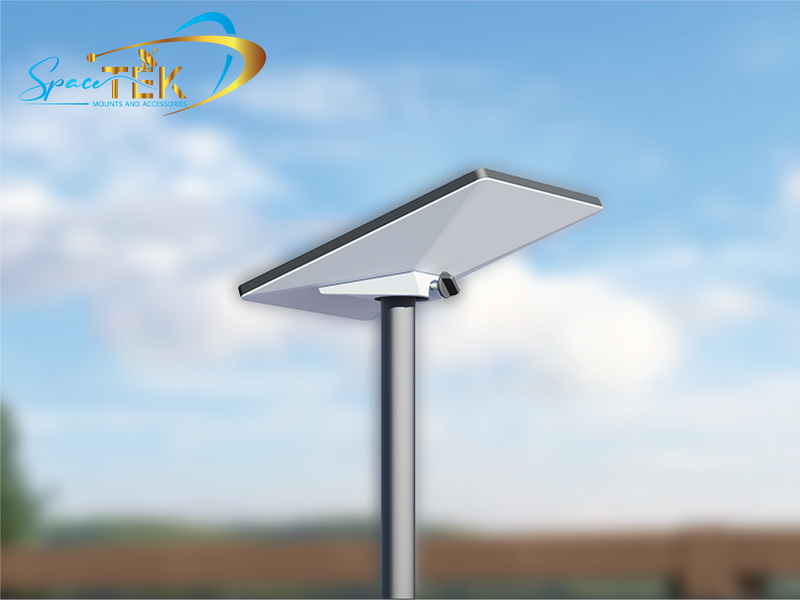Why Upgrading Your Starlink Setup Matters in 2025
Upgrade Your Starlink Experience and you'll open up faster speeds, better reliability, and fewer drop-outs. Here's what makes the biggest difference:
- Optimal dish placement - Clear line-of-sight and proper elevation
- Quality mounting hardware - Weatherproof, adjustable mounts for stability
- Power backup solutions - UPS systems to prevent 15-minute reconnection delays
- Smart cabling choices - Weather-resistant cables with proper management
- Network optimisation - Mesh Wi-Fi, QoS settings, and connection bonding
- Mobile-ready accessories - Portable mounts for caravans and remote work
Starlink has revolutionised internet access across remote Australia. From cattle stations in the Kimberley to mining camps in the Pilbara, satellite internet now delivers speeds that rival city connections. But here's the thing - while Starlink works brilliantly straight out of the box, smart upgrades can take your setup from good to exceptional.
The difference between a basic install and an optimised one often comes down to the details. Poor dish placement can cut your speeds in half. Power blips force lengthy reconnections. Cheap mounting hardware fails when cyclone season hits. These aren't just minor inconveniences - they're connection killers that leave you offline when you need internet most.
Whether you're a grey nomad chasing winter sun, a remote worker juggling video calls, or a station manager keeping operations running, the right accessories transform Starlink from unreliable to bulletproof. Small investments in quality gear deliver massive improvements in performance and peace of mind.
I'm Aaron Wroblewski, founder of SpaceTek Australia, and I've spent over 15 years solving satellite connectivity challenges across this continent. After helping thousands of Australians Upgrade Your Starlink Experience with weatherproof mounts and smart accessories, I've learned exactly which upgrades deliver real results. Let me show you the proven tweaks that'll keep you connected from Darwin to Hobart.

Upgrade Your Starlink Experience with Optimal Dish Placement
Getting your dish placement right is the foundation of everything else. Upgrade Your Starlink Experience starts with understanding that your dish needs a crystal-clear conversation with satellites zipping overhead at 17,000 km/h. Even the smallest obstruction can turn your blazing-fast connection into a frustrating crawl.
Think of it like this - your Starlink dish is having a chat with space, and trees, buildings, or power lines are like someone constantly interrupting that conversation. The result? Dropped video calls, buffering Netflix, and those moments when you're wondering if you've gone back to dial-up days.
Find the Sweet Spot to Upgrade Your Starlink Experience
Before you even think about mounting hardware, grab your phone and fire up the Starlink app's obstruction tool. This clever feature shows you exactly what's blocking your signal and how those obstructions affect performance throughout the day. It's like having X-ray vision for your internet connection.
We've watched customers transform their setups with surprisingly simple moves. One station manager near Charleville moved his dish just three metres higher to clear a neighbour's shed roof - his download speeds jumped from a frustrating 80 Mbps to a solid 150 Mbps overnight. Another family in Tasmania relocated from their backyard to a roof mount and gained 50% more consistent speeds.
The magic happens when you find that sweet spot with a clear 100-degree view of the northern sky. Here in Australia, Starlink satellites spend most of their time in northern orbital paths, so that southern tree line matters less than the northern horizon scan. Your dish wants to see plenty of sky, especially toward the north.
Mounts Built for Aussie Weather
Standard mounting solutions often buckle when Australian weather throws its worst tantrums. Cyclone winds, hail the size of golf balls, and temperature swings that'd make a thermometer dizzy demand serious engineering. That's exactly why we developed our Starlink mounting hardware range specifically for our unique conditions.
Our rust-resistant steel mounts laugh in the face of winds up to 200 km/h - we've tested them in real cyclone conditions across northern Australia. The adjustable design lets you fine-tune your dish angle for optimal signal reception, while heavy-duty materials ensure your setup stays put when the weather bureau starts issuing warnings.
For Gen 3 users specifically, our comprehensive mounting kit guide covers everything from Colorbond roof penetrations to rural shed mounting. Whether you're dealing with tile installations or need a solid pole mount for that perfect elevation, we've engineered solutions that actually work in the real world.
The difference between a flimsy mount and quality hardware becomes crystal clear when the first big storm hits. While your neighbours are climbing ladders to reposition fallen dishes, you'll be streaming Netflix without missing a beat.
Power & Cabling: Keep the Bits Flowing
Getting your Starlink dish connected is just half the battle. The real secret to rock-solid performance lies in managing power and cables properly. These behind-the-scenes components might not be glamorous, but they're often the difference between flawless connectivity and frustrating drop-outs.
Backup Power to Upgrade Your Starlink Experience
Nothing kills a good video call quite like a power blip. Even the briefest 10-second outage sends your Starlink system into a complete reboot cycle, leaving you staring at loading screens for up to 15 minutes while it reacquires satellite signals. In rural Australia, where power fluctuations are as common as kangaroos, this becomes a daily headache.
A quality uninterruptible power supply (UPS) changes everything. Your Starlink dish typically draws between 50-75 watts during normal operation, spiking to around 275 watts during startup. A decent 600VA UPS easily handles these requirements and provides enough backup power to ride out typical grid hiccups. For users running critical applications or dealing with frequent outages, stepping up to a 1500VA unit offers extended runtime and extra peace of mind.
Scientific research confirms the benefits of UPS systems for satellite internet installations, particularly in areas with unstable power grids. The investment pays for itself after just a few avoided reconnection delays.
For off-grid trips or remote properties running on solar and batteries, our StarPower 12V/24V DC supply eliminates the need for power inverters entirely. By converting battery power directly to Starlink's requirements, you avoid conversion losses and enjoy cleaner, more stable power delivery.
Smart Cable Choices
Cable management might seem boring, but it's absolutely critical for long-term reliability. The standard Starlink cable works perfectly for straightforward installations, but Australia's harsh conditions and longer cable runs demand smarter solutions.
UV-resistant cables prevent degradation from our notoriously intense sun. Proper strain relief protects connections from constant wind movement - something anyone who's lived through a Queensland storm season understands. Cable runs should avoid power lines and large metal structures that can interfere with signal quality, while weatherproofing connections prevents moisture ingress during the wet season.
The Gen 3 system's 50-foot cable length gives you excellent flexibility for most installations, but longer runs require careful planning to maintain signal integrity. Tidy cable management isn't just about aesthetics - organised runs prevent damage, reduce maintenance headaches, and make troubleshooting much easier when issues arise.
Our complete accessories guide covers everything from weatherproof conduits to professional-grade strain relief systems. These small details make the difference between a setup that works for months and one that performs flawlessly for years.
Home & RV Networking Boosts
Getting Starlink's signal to your dish is only the beginning. The real magic happens when you distribute that blazing-fast connection throughout your home, caravan, or remote worksite. Too many users blame Starlink for sluggish performance when the culprit is actually poor Wi-Fi distribution or network bottlenecks.
Think of your Starlink connection like water flowing through pipes. You might have excellent pressure at the main line, but kinked hoses and blocked outlets will leave you with a trickle at the tap. Your networking setup works the same way - even 200 Mbps from space becomes useless if your router can't deliver it where you need it.
Whole-House Coverage
Wi-Fi dead zones are the silent killers of productivity. You've probably experienced the frustration - crystal clear video calls in the kitchen, but step into the back bedroom and everything falls apart. The solution isn't more speed from Starlink; it's smarter signal distribution throughout your space.
Router placement makes or breaks your network performance. Position your main router centrally, away from thick walls, metal cabinets, and other electronics that interfere with Wi-Fi signals. For larger homes or multi-story buildings, a single router simply can't provide reliable coverage everywhere.
That's where mesh networking transforms your connectivity experience. Rather than forcing one router to cover impossible distances, mesh systems create multiple access points that work together seamlessly. Our Starlink Mesh WiFi guide explains optimal placement strategies specifically for Australian homes and conditions.
Wi-Fi 6 technology handles multiple devices far more efficiently than older standards. With Starlink delivering speeds that can exceed 300 Mbps, your router often becomes the bottleneck. Upgrading to Wi-Fi 6 ensures every device gets the bandwidth it needs without competing for limited wireless resources.
Ethernet & QoS for Low-Latency Tasks
Wireless connections add precious milliseconds of delay that can make or break critical applications. Gaming sessions, video conferences, and VoIP calls benefit enormously from the rock-solid reliability of wired Ethernet connections. When every millisecond counts, cables beat wireless every time.
Quality of Service (QoS) settings act like traffic controllers for your network, ensuring important data gets priority treatment. Configure your router to prioritise video calls over background downloads, or homework traffic over streaming during study hours. This prevents one heavy user from monopolising the entire connection.
VLAN tagging takes network management to the next level for advanced users. Business operators can isolate guest access from critical systems, while families can create separate networks for different activities. It's like having multiple internet connections running through the same hardware.
Bonding Multiple Links for Bullet-Proof Connectivity
Even the most perfectly optimised Starlink setup experiences brief interruptions as satellites hand off connections every 15 seconds. For users who demand absolute reliability - think remote medical consultations or live broadcasting - connection bonding provides the ultimate safety net.
Speedify's channel bonding technology combines Starlink with 4G, 5G, or even DSL connections into one super-reliable link. When Starlink briefly drops during satellite transitions, traffic seamlessly shifts to backup connections without interrupting your session.
This technology transforms livestreaming and video conferencing from nail-biting experiences into smooth, professional interactions. Remote workers report zero dropped calls after implementing bonded connections, while content creators stream without those heart-stopping buffering moments that kill audience engagement.
Cellular fallback systems using mobile data provide excellent backup for critical applications. While 4G might not match Starlink's speed, it bridges those crucial gaps when satellite connections briefly falter. The combination delivers enterprise-grade reliability using consumer equipment.
Starlink for Remote Australia & On-the-Move Set-ups
Australia's vastness demands portable internet solutions. Whether you're exploring the Nullarbor or working from a remote mine site, mobile Starlink setups require specialised equipment and techniques.
Portable Mounts & Quick Deploy Kits
Traditional roof mounts don't work for temporary installations. Portable tripods, suction cup mounts, and magnetic bases provide stable platforms without permanent modifications.
Our portable mounting solutions cater to every mobile scenario. Tripod mounts work brilliantly for camping, while suction cup systems suit caravan roofs. Magnetic bases provide instant deployment on steel surfaces.
Quick deployment matters when you're setting up camp after dark or need internet for an emergency. Our essential accessories guide includes rapid-setup kits that get you online in minutes, not hours.
For grey nomads following the sun around Australia, consistent setup procedures prevent connection issues. Mark optimal dish positions with GPS coordinates, photograph successful configurations, and document what works at each location.
Data Management & Firmware Hygiene
Mobile users face unique data management challenges. Starlink's data policies vary by plan, and exceeding limits can trigger throttling that ruins your experience.
Monitor usage through your router's built-in tools or third-party applications. Set alerts before approaching data limits, and configure automatic restrictions for heavy users during peak times.
Firmware updates improve performance and fix bugs, but they consume data. Schedule updates during off-peak hours or when connected to unlimited networks. The Starlink system provides telemetry alerts that help diagnose performance issues before they become critical.
Frequently Asked Questions about Upgrading Starlink
How do I stop brief drop-outs during storms?
Those frustrating storm-related disconnections usually come down to two main culprits - and both are surprisingly easy to fix. Wind-induced dish movement causes the first type of drop-out. When your dish shifts even slightly during gusty conditions, it loses its precise satellite lock and needs time to reacquire the signal.
The second villain is power fluctuations. Even brief voltage dips force your Starlink system to restart completely, triggering that annoying 15-minute reconnection process. A quality UPS system eliminates power-related drops entirely, while our weatherproof mounting hardware keeps your dish rock-steady through cyclone-force winds.
Heavy rain does attenuate satellite signals temporarily, but this "rain fade" typically lasts only a few minutes during the absolute worst downpours. Properly mounted dishes with backup power sail through storms that leave other internet services offline for hours.
What's the safest maximum cable length before speed suffers?
Standard Starlink cables perform reliably up to 150 feet without any signal degradation - that's plenty for most residential and small commercial installations. Beyond this distance, you'll need signal boosters or fibre optic extensions to maintain full performance.
Here's the catch though: longer cable runs become lightning magnets in storm-prone areas. Each additional metre increases your vulnerability to electrical damage, especially in rural Australia where lightning strikes are common. Proper weatherproofing becomes absolutely critical for extended runs.
If you need longer distances, consider positioning your router closer to the dish and using mesh Wi-Fi to distribute the signal. This approach often delivers better performance than stretching cables across your entire property.
Can I combine Starlink with 4G without extra hardware?
Software-based bonding solutions make this surprisingly straightforward. Applications like Speedify install directly on your computer or router, automatically balancing traffic between your Starlink and mobile connections without requiring additional networking equipment.
The setup process is refreshingly simple - enable both internet connections, install the bonding software, and watch it automatically manage traffic distribution. When one connection drops, traffic seamlessly shifts to your backup link without interrupting video calls or downloads.
This technology transforms unreliable connections into bulletproof internet. Remote workers report zero dropped calls after implementing bonded connections, while content creators stream without those heart-stopping buffering moments that kill live broadcasts.
Reliable Internet Starts with the Right Accessories
When you Upgrade Your Starlink Experience with quality accessories, you're not just buying gear - you're investing in connection reliability that works when it matters most. The difference between a frustrating internet experience and bulletproof connectivity often comes down to solving three critical problems: obstructions that block your signal, power glitches that force lengthy reconnections, and messy cabling that creates ongoing maintenance headaches.
SpaceTek Australia's accessories tackle these performance killers head-on. Our rust-proof mounting hardware keeps your dish stable and properly positioned, even when cyclone winds try their best to move it. Smart power management solutions eliminate those maddening 15-minute reconnection delays that happen every time the power flickers. Professional cable management systems protect your investment from UV damage and weather extremes while keeping everything tidy and accessible.
We've been solving connectivity challenges across this continent for over 15 years, from tropical Darwin to windswept Tasmania. Whether you're dealing with salt spray on the coast, dust storms in the centre, or temperature swings that would make a thermometer weep, our accessories are engineered specifically for Australian conditions.
The beauty of a properly optimised Starlink setup becomes obvious the moment you need it most. Picture streaming the cricket from a remote station without buffering, running video calls from your caravan without dropouts, or keeping the kids connected during school holidays in the middle of nowhere. That's what happens when you choose accessories that actually work in real Australian conditions.
Quality mounting hardware transforms wobbly installations into rock-solid platforms. Backup power solutions mean brief outages don't derail your workday. Smart networking choices distribute that precious satellite signal to every corner of your property. These aren't luxury upgrades - they're practical solutions that prevent the common problems that plague standard installations.
Ready to transform your connection from unreliable to bulletproof? Our complete range of Starlink accessories covers everything you need to Upgrade Your Starlink Experience properly. From the red dirt of the Pilbara to the green hills of Tasmania, we've got the gear that keeps Australia connected.



Leave a comment
This site is protected by hCaptcha and the hCaptcha Privacy Policy and Terms of Service apply.